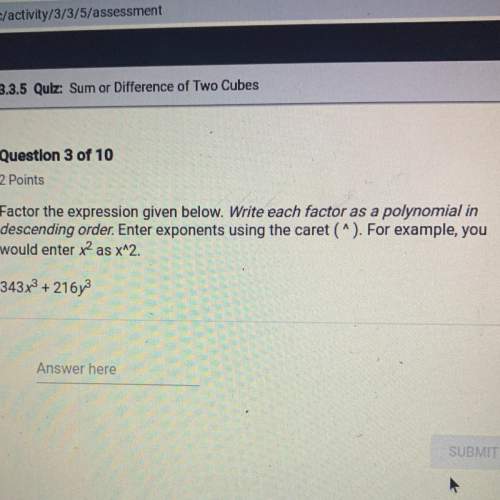
Mathematics, 25.11.2019 21:31 jamisoncameron000
The electric field in the xy-plane due to an infinite line of charge along the z-axis is a gradient field with a potential function v(x, y)equalsc ln (startfraction r 0 over startroot x squared plus y squared endroot endfraction ), where cgreater than0 is a constant and r 0 is a reference distance at which the potential is assumed to be 0. use this information to answer parts a through c.. find the components of the elactric field in the x-and y-directions, where ex. y)vx, y). choose the correct answar below where c> 0 is a constant and ro is a reference distance at which the potential is assumed to be 0. use this information to a. (x. y) cro ob. e- (x. y) o c. (x y) (x y)

Answers: 1


Other questions on the subject: Mathematics

Mathematics, 21.06.2019 19:30, estherstlouis7812
1. find the area of the unshaded square 2. find the area of the large square 3. what is the area of the frame represented by the shaded region show
Answers: 1

Mathematics, 21.06.2019 22:30, lewismichelle11
Which statements are true about additional information for proving that the triangles are congruent check all that apply
Answers: 1

Mathematics, 21.06.2019 23:50, Angel4345
Astudent draws two parabolas both parabolas cross the x axis at (-4,0) and (6,0) the y intercept of the first parabolas is (0,-12). the y intercept of the second parabola is (0,-24) what is the positive difference between the a values for the two functions that describe the parabolas
Answers: 3

Mathematics, 22.06.2019 00:00, djjdjdjdjdNfnd1941
Consider the following geometry problems in 3-space enter t or f depending on whether the statement is true or false. (you must enter t or f -- true and false will not work.) f equation editorequation editor 1. a plane and a line either intersect or are parallel t equation editorequation editor 2. two planes parallel to a third plane are parallel f equation editorequation editor 3. two lines either intersect or are parallel f equation editorequation editor 4. two planes orthogonal to a third plane are parallel f equation editorequation editor 5. two planes orthogonal to a line are parallel f equation editorequation editor 6. two planes either intersect or are parallel f equation editorequation editor 7. two lines orthogonal to a third line are parallel t equation editorequation editor 8. two lines parallel to a third line are parallel t equation editorequation editor 9. two planes parallel to a line are parallel f equation editorequation editor 10. two lines parallel to a plane are parallel f equation editorequation editor 11. two lines orthogonal to a plane are parallel
Answers: 2
You know the right answer?
The electric field in the xy-plane due to an infinite line of charge along the z-axis is a gradient...
Questions in other subjects:


World Languages, 22.07.2019 21:30



Mathematics, 22.07.2019 21:30

History, 22.07.2019 21:30

Mathematics, 22.07.2019 21:30

Mathematics, 22.07.2019 21:30





